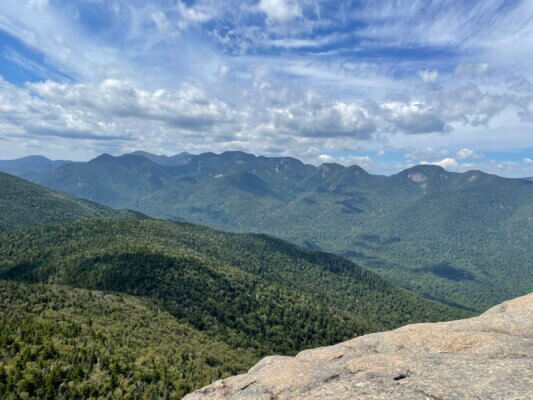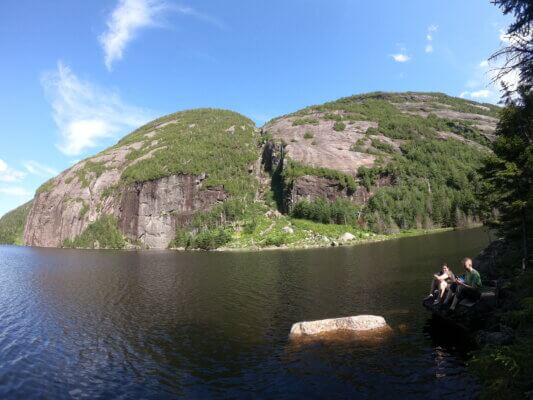By Maria College Communications Specialist Nick Viviano, ’19
Earth Day 2023
As a College founded by the Sisters of Mercy, Maria College is deeply rooted in their critical concerns of immigration, racism, women, nonviolence, and the earth. The Sisters of Mercy believe that the earth is vital for the sustainability of life that supports both a lifestyle and legislation that acknowledges everyone’s right to water and the immediate need to address climate change.
Saturday, April 22, 2023, is Earth Day, a day that is celebrated annually and honors the achievements of the environmental movement that helps raise awareness of the need to protect Earth’s precious resources for future generations. Many who participate in celebrating Earth Day organize to pick up litter/plastics, plant trees, recycle, conserve water, monitor your nutrition and diet, get the youth involved in these processes, and quite possibly the most important act; having conversations to raise awareness making a widespread difference. As someone who spends the majority of my time outdoors, specifically hiking and fly fishing, I would like to share some personal thoughts on how we can do our part to make a difference.

Picking up trash/plastic in your local parks, neighborhoods, and nature reserves
One of the most impactful acts you can do to make an almost immediate difference is to participate in local cleanups around your area. It is as simple as walking around with a trash bag or a small bin to clean up the trash and plastics that you may find! With the aid of social media, it will not be hard to find events that are going on around you to help aid in the cleanups. Highly populated areas are always your best bet! Be sure to bring plenty of trash bags and bins, as there will be more litter than you would expect!

Planting events
We love our trees! Trees capture carbon, cool overheated places, support pollinators, reduce the risk of disease as well as boost local economies, among other things. They also give off oxygen that we need to breathe and reduce the amount of storm runoff, which will in turn limit the amount of erosion and pollution that spill into our waterways. Of course, we cannot forget that many species of wildlife depend on trees, as they are their main source of habitat. They provide food, protection, and homes for many birds and mammals. By planting trees, you are benefiting the environment as well as its inhabitants in more ways than one. You are improving the natural lifecycle of the environment around you!

Recycling
This one may seem obvious, but there is no harm in going over the basics! We have been told since we were very young to always recycle when we can. Now more than ever, we all need to do our part in trying to limit plastic use. People choose not to recycle because there is no immediate reward, but taking small steps to recycle will lead to long-term gain.
Recycling prevents pollution. By choosing to recycle as many products as you can, while also buying recycled materials and goods, you are greatly aiding in reducing environmental pollution. It also helps to conserve natural resources. Materials such as aluminum and glass can be recycled several times without losing strength and extracting more resources. This can help in saving and protecting natural habitats that could be destroyed by mining. Be sure to ask yourself before throwing materials in the trash, “Can this be recycled?”

These are just a few ways that we can contribute to help make our planet a more prosperous and sustainable place.
I am someone who frequents the outdoors, and with all of the hours that I have logged out in the woods and on the streams and lakes, it is disheartening to see many polluted areas in my favorite places. I often carry small trash bags with me to load up all of the trash I see along the riverbanks and on the trails. I spend a lot of time down in the Catskill Mountains and up north in the Adirondack Park, specifically the High Peaks region of the Adirondacks, which holds a very special place in my heart.

Back in September of 2021, I accomplished my goal of becoming an Adirondack 46’er. For those who are unfamiliar, there are 46 mountains in the Adirondack Park that are 4,000 feet or higher in elevation. If you climb them up and back down again, you become part of a historical list that dates back to the 1920s of hikers who have climbed all 46 mountains. Throughout my journey, there were feelings of pain, struggle, doubt, and fear. However, with that, there came actions of perseverance, grit, intuitiveness, and triumph. The mountains, trails, streams, and wildlife gave me so much in return: an already deeper and more intimate appreciation for the outdoors.
Being ten miles from the nearest road, you are at the mercy of the mountains. And truly, there is no better feeling. Completely detached from the day-to-day grind, there is much peace and perspective to be gained when in the middle of nowhere. Surrounded by pine, engulfed in a bowl of high peaks, or aided by the sweet songs of chirping birds, these are places to never be overlooked or taken advantage of. These parks, streams, and lakes are all a glimpse into a past life. They hold so much history and value, as they are vital in providing us with what we need to sustain our own lives and those of future generations. We must do our part.
In places such as the Adirondacks, Catskills, or even your local streams and parks, there should always be a sense of responsibility to help conserve and educate on the importance of how crucial they are to our sustainability here on earth. With one act of purpose comes many, and we will all be better off because of it.
Nick Viviano, ‘19

